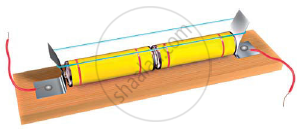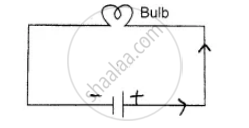Advertisements
Advertisements
Question
Visit an electric shop. Request an electrician to show you the various types of fuses and MCB and to explain how they work.
Solution
Types of Fuses:
-
Rewirable Fuses:
- Usage: Household applications.
- Working: The fuse wire melts when the current is too high, breaking the circuit.
-
Cartridge Fuses:
- Usage: Electrical appliances and vehicles.
- Working: A thin wire inside melts with excess current, stopping the flow.
-
Dropout Fuses:
- Usage: Outdoor power distribution.
- Working: The fuse element melts and the holder drops out, indicating a blown fuse.
-
HRC Fuses:
- Usage: Industrial applications.
- Working: The fuse wire melts and an arc-quenching medium extinguishes the arc, safely interrupting the circuit.
Types of MCBs:
-
Type B MCBs:
- Usage: Residential and light commercial.
- Working: Trips at 3-5 times the load current; reacts to overloads and short circuits.
-
Type C MCBs:
- Usage: Commercial and industrial.
- Working: Trips at 5-10 times the load current; handles higher inrush currents.
-
Type D MCBs:
- Usage: High inrush currents (e.g., motors).
- Working: Trips at 10-20 times the load current; suited for very high starting currents.
Working:
- Fuses:
- Function: Protect circuits by melting the wire when the current is too high.
- MCBs:
- Function: Protect circuits by automatically switching off the electrical supply during a fault using thermal and magnetic mechanisms.
RELATED QUESTIONS
Draw the circuit diagram to represent the circuit shown in the figure.

Figure shows four cells fixed on a board. Draw lines to indicate how you will connect their terminals with wires to make a battery of four cells.

Longer line in the symbol for cell represents its ______ terminal.
The combination of two or more cells is called a ______.
Zubeda made an electric circuit using a cell holder shown in Figure, a switch and a bulb. When she put the switch in the ‘ON’ position, the bulb did not glow. Help Zubeda in identifying the possible defects in the circuit.

In the circuit shown in figure would any of the bulbs glow when the switch is in the ‘OFF’ position?

Write true or false for a given statement.
Wool is a conductor of electricity.
Select the correct alternative
Electricity can flow through
The diagram given below shows a bulb connected with a cell having terminals A and B. Mark the direction of current in the bulb.

Draw a circuit diagram for a bulb connected to a cell with a switch. Mark arrow in the diagram to indicate the direction of flow of current.
